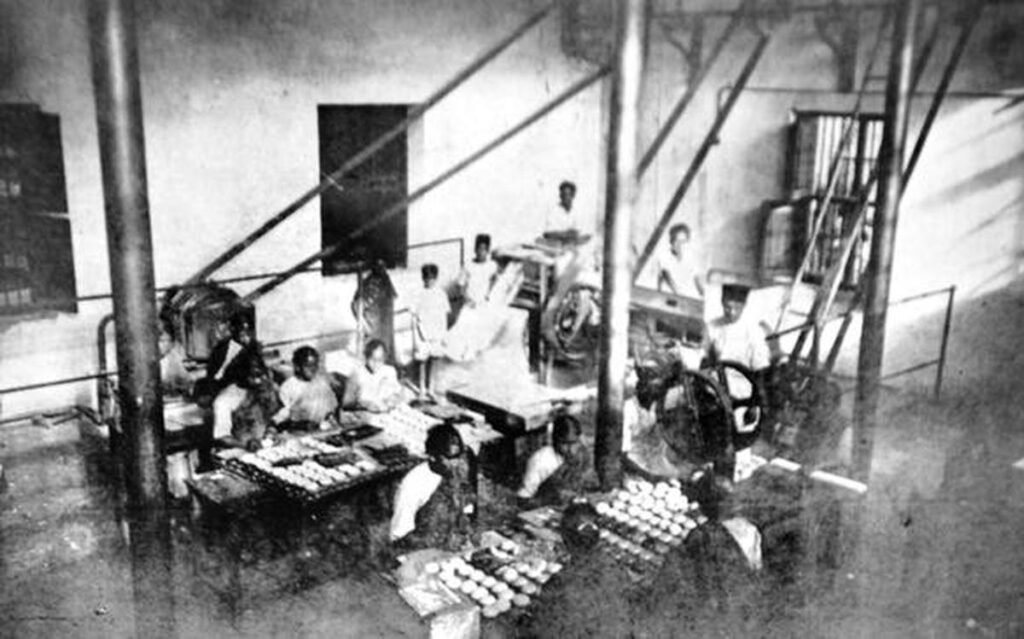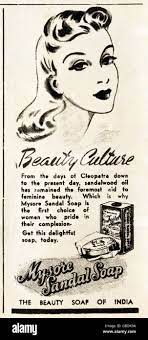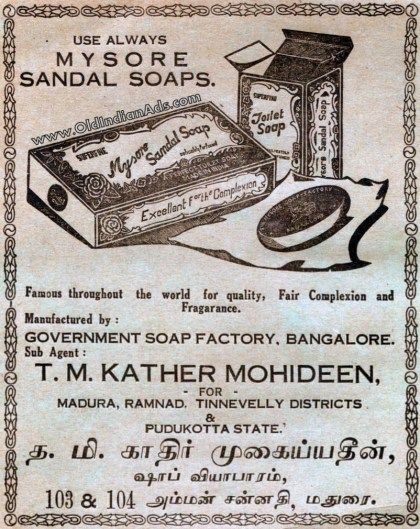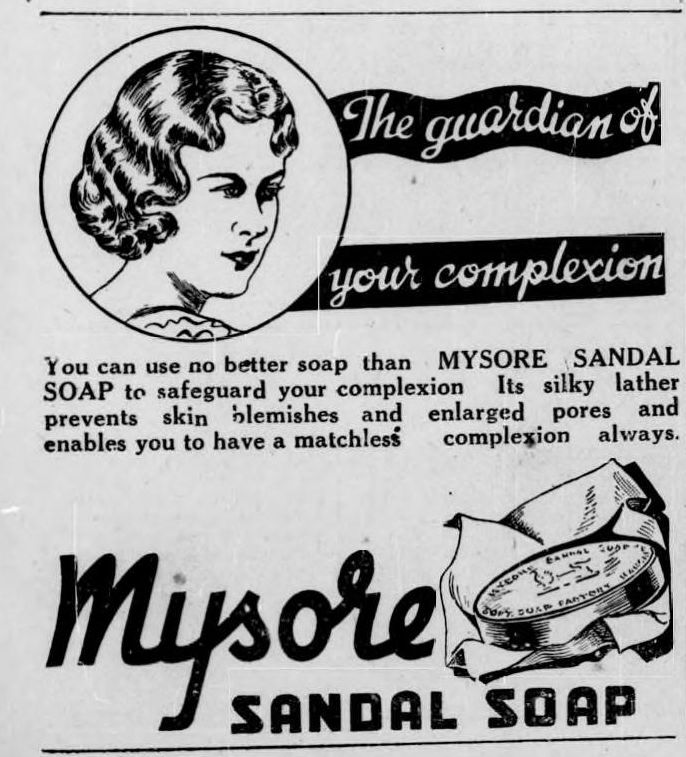Mysore Sandal Soap – A Soap of Culture

Sandalwood has a luxurious, comforting aroma. Mysore Sandal Soap has been a household name for over a hundred years, and whenever the subjects of soap and sandalwood come up, it is the name that immediately comes to mind.
The First World War marked the beginning of this soap’s fascinating storyline. A lot of sandalwood was sent to Europe from the kingdom of Mysore, which had the world’s highest production capacity. However, because of the conflict, most of the world’s supply of sandalwood was left unsent at that time.
In May 1916, Nalvadi Krishna Raja Wodeyar IV, who was then the Maharaja of Mysore, and Diwan Sir Mokshagundam Visvesvaraya, who was then the Diwan of Mysore, set up the Government Sandalwood Oil Plant in Mysore to turn sandalwood into the oil.
Sandalwood Oil Extraction Facility
Alfred Chatterton, the principal of the College of Engineering in Madras, was appointed Director of Industries. His inventiveness made him stand out. He was an early adopter of aluminium for common household items. He had held the position of Director of Industries in Madras State before.
Together with J. J. Sudborough and H. E. Watson, two chemistry professors at the Institute of Science in Bangalore, he launched the first experimental distillation of sandal oil in India. They tried a lot of different things before they figured out how to make pharmaceutical-grade sandal oil that would be acceptable to European customers.
A facility in Mysore that could produce 2,000 pounds of oil per month was established not long after the oil met even stricter criteria. In August 1916, Chatterton established the Mysore Sandalwood Oil Factory, from which high-quality sandal oil was being sent to London.
Another plant dedicated to the distillation of sandalwood oil started in Bangalore in the same year. Quickly, new steam plants and stills were put in place, and by the time a third, much larger facility opened in Mysore, production had gone up by a huge amount.
Creation of the Soap

Two years later, a unique collection of sandalwood oil soaps was presented as a gift to the Maharaja. As soon as he realized this, he told Sir MV about his plan to mass-produce inexpensive soaps using the same ingredients. The ambitious team, which went on to design several projects whose benefits are still enjoyed today, all agreed that the state needed to become more industrialized.
Dewan Sir M.V. prioritized the growth of Bangalore’s manufacturing sector. He aimed to make high-quality soap at an affordable price for the masses. The Indian Institute of Science also hosted an invited technical expert from Bombay so he could conduct his tests there. At the same time, Sir M.V. recognized an exceptionally promising young researcher working at the Institute of Science named S.G. Shastry (who is believed to be the first Kannadiga to get a master’s degree in industrial chemistry in England). In order to acquire the necessary knowledge for the government’s soap-making program, he was sent to England. There was a hiccup in England, but he eventually learned what he needed to know.
Mr. Shastry took the technology back to India, ushering in the first sandal soap to be produced in India, near Bangalore’s Cubbon Park, establishing the Government Soap Factory.
Marketing
Known simply as “Mysore Sandal Soap,” it quickly became a household brand throughout India. “Sandal Note,” a proprietary blend of natural essential oils, is the primary fragrance, and the soap is billed as the world’s only one to have pure sandalwood oil.
In order to introduce the soap to consumers in a fresh and innovative way, S.G. Shastry came up with a novel marketing strategy. Soaps from competing brands used to be square or rectangular and wrapped in thin, glossy, colourful sheets. Mysore Sandal soap, on the other hand, is oval. For the factory emblem, he decided on the mythical monster Sharaba as the factory’s mascot since it is reported to have the body of a lion and the head of an elephant, and he was given pride of position in the centre. The creature was symbolic of the state’s guiding ideology, which emphasized the importance of knowledge, bravery, and strength. On the outside of each soapbox was the inscription, “Srigandhada Tavarininda” (from the maternal home of sandalwood’).




S.G. Shastry believed that the culturally significant soap should be treated as precious as a gem and handed to consumers. As a result, a rectangular box, like those used for storing jewellery, was created. Care was taken in selecting and printing the box’s flower patterns and colours. Soap was sent in a box lined with tissue paper, much like how jewellery stores package and send out their wares.
Proper and methodical advertising was also done. There were neon billboards advertising the soap in major cities—advertisements for the product used to take up half a page in major newspapers like The Hindu. Images of the soapbox appeared on everything from matchbooks to tram tickets. In the past, Karachi residents have ridden camels in a parade to promote the product.
It was presented to the Queen in proper fashion during a London exhibition. She decided to purchase more soaps for the Royal Family since they smelled so nice. British soapmakers were jealous of the brand’s success and marketing campaign. They allegedly attempted to make fun of it by calling it MY-SORE soap. However, Mysore Sandal Soap from Bangalore, against all odds, became a household name.
Production had to be ramped up to meet the surging demand that came with the product’s rising profile. For this reason, in 1957, the soap factory relocated to a larger facility in the Rajajinagar Industrial neighbourhood. The Mysore and Shimoga sandalwood oil units were amalgamated by the government in 1980 and established as Karnataka Soaps and Detergents Limited. Since then, they have expanded their operations to include the production of incense sticks, talcum powder, and detergents in addition to their signature Sandal Soaps. In 2000, the “Grow More Sandal” initiative was launched in an effort to keep up with the rising demand for raw materials.
Mysore Sandal Soap stands out among the myriad soap brands available today. It has long served as a symbol of our nation’s deep cultural roots.
Reference
https://www.livehistoryindia.com/story/religious-places-/mysore-sandal-soap-a-maharajas-gift



